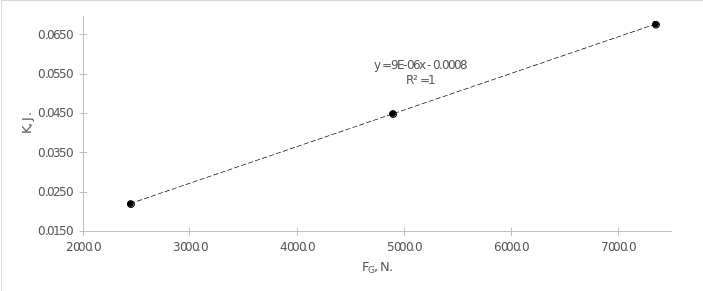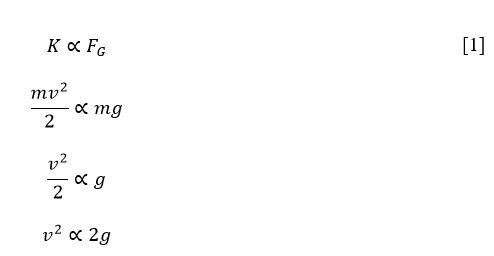Introduction
This paper investigates the relationship between kinetic energy and the force applied to a cart moving vertically. The force is realized through the mass of the weight suspended vertically, which makes the cart move. The ultimate goal of the laboratory work is to determine the relationship between the kinetic energy of motion and the force.
Analysis
In this laboratory work, the primary data were the positions and times for which these positions were measured. Table 1 summarizes the results of the empirical studies. From the data obtained, the corresponding velocity values for each of the tests were obtained using the formula for the ratio of the position difference to the time difference to determine the instantaneous velocity: Table 2 contains information about that. In addition, Table 2 contains information about the weights of the weights that were suspended from the smart cart through the pulley.
Table 1: Primary results of direct measurements about positions and times.
Table 2: Data on instantaneous velocities that have been calculated for each of the tests, as well as the mass of the suspended weights.
The values of velocity and mass are sufficient to determine the kinetic energy experienced by the cart in motion. The equation K=(mv2)/2 is used to calculate the kinetic energy. Thus, the corresponding kinetic energy values for each of the tests were calculated, shown in Table 3. The calculation took into account that the mass of the weights was measured in grams, and the SI calculation requires the use of a kilogram as the standard unit of mass. Therefore, the results shown in Table 3 were calculated by converting the mass of the weights to kilograms. Table 3 also shows the values of the corresponding forces of gravity solely affecting the cart through the weights suspended vertically. The values of the gravity forces were calculated from the corollary of Newton’s second law (F = mg), assuming that the acceleration of gravity was assumed to be 9.807 m/s2 (Science & Math, 2022).
Table 3: Data on the calculated values of kinetic energy (J) and gravity affecting the cart (N).
In order to study the dependence of kinetic energy on gravity controlling the motion of the cart, the corresponding points were plotted on a scatter plot. The corresponding plot with the plotted regression line is shown in Figure 1; it is noteworthy that the coefficient of determination turns out to be unity, indicating excellent reliability of the linear approximation of the data. This seems logical, as follows from the formulae shown in [1]. Since v2 determines the kinetic energy and g determines the force of gravity, the linearity of this dependence is confirmed. It is observed that kinetic energy increases with increasing gravity, which means that when the mass of weights suspended from the cart increases, gravity will continue to increase naturally. The Y-intercept makes no physical sense because there is no kinetic energy in the absence of motion. At the same time, the tilt determines the position of the cart and is measured in meters since the distance traveled turns out to be the same.


Conclusion
To summarize, it should be said that the kinetic energy linearly depends on the applied force of gravity. As the mass of the suspended weight increased, and hence the gravity force increased, a linear increase in the values of kinetic energy was observed. Linearity was confirmed with the help of formulas, which means that the obtained results correspond perfectly to theoretical expectations.
Reference
Science & Math. (2022). How do you find F = mg? Reviews. Web.